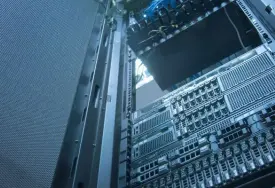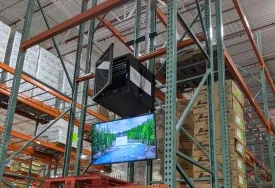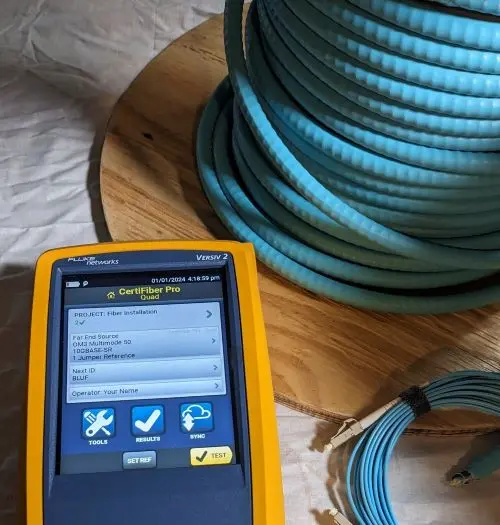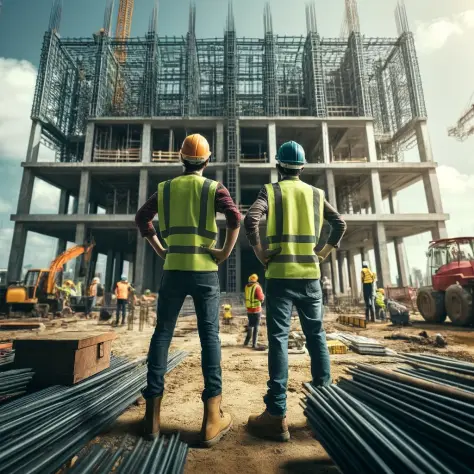Detroit, MI
data center

In today's digital age, the term "data center" has become synonymous with the backbone of modern computing. These vast facilities are integral to the storage, management, and dissemination of data across the globe, serving as the nerve center for companies, governments, and individuals alike. As businesses increasingly rely on cloud computing and big data analytics, the demand for robust and efficient data centers continues to grow. Typically, a data center houses critical IT equipment such as servers, storage systems, and network infrastructure, all working in concert to ensure seamless access to information. The importance of data centers cannot be overstated, as they not only facilitate the daily operations of countless organizations but also support the digital experiences we have come to depend on in both our personal and professional lives.
The evolution of data centers reflects the rapid advancements in technology and the ever-changing needs of the digital landscape. Traditionally, data centers were on-premises facilities owned and operated by individual organizations. However, the rise of cloud service providers like Amazon Web Services, Microsoft Azure, and Google Cloud has introduced a shift towards off-premises, shared data centers that offer scalable solutions with cost efficiencies. This transformation has made data centers more accessible to businesses of all sizes, enabling them to leverage state-of-the-art technology without investing heavily in physical infrastructure. Furthermore, advancements in cooling techniques, energy efficiency, and automation within data centers have not only reduced operational costs but also contributed to more sustainable practices in the tech industry.
In the realm of cybersecurity, data centers play a pivotal role in safeguarding sensitive information. With the increasing frequency of cyber threats, data centers must implement rigorous security measures to protect the integrity and confidentiality of the data they store. From biometric access controls to advanced firewalls and encryption protocols, the security infrastructure of a data center is as sophisticated as its technological capabilities. Moreover, data centers are designed with redundancy and disaster recovery plans to ensure uninterrupted service, even in the face of natural calamities or technical failures. As digital transformation continues to accelerate across industries, the role of data centers in providing secure, reliable, and efficient data management solutions will be more vital than ever, making them an indispensable asset in the digital ecosystem.
We bring a high level of expertise to every project, backed by years of industry experience. Please visit our work to see detailed examples of our completed projects and the high-quality standards we uphold.

Our team stays up-to-date with the latest network standards and installation practices, ensuring that your systems are cutting-edge and compliant. This means we use the most current technologies and methods to deliver reliable, efficient, and future-proof networking solutions.

We use only the highest quality copper, fiber, and AV products, ensuring superior performance and durability in all our installations. Each product is certified to meet or exceed manufacturers' specifications, guaranteeing optimal reliability and efficiency for your network.

Our data cabling projects are performed professionally, reliably, and with full accountability, giving you peace of mind and confidence in our services.
Upgraded a global financial services company’s WAN to an AT&T rate adjustable 100Mbps interstate-rated switched Ethernet circuit. Install flexible conduit from the parking garage telco room to the building interior. Pull 300’ CAT 5E CMP cable from AT&T demarc using the building’s existing conduit over the lobby and up to the tenant’s 3rd floor MDF...
Complete build-out of the cable plant for a national fine dining restaurant. Install flame-retardant telecom backboards in the electrical room. Install an 11U wall-mount open swing rack on the backboard. Ground rack to building UFER with #6 AWG. Core drill into the masonry block wall and install 1-¼ EMT sleeves. Build overhead cable support system in kitchen and dining...
Achieve higher bandwidth and faster data transfer rates for an investment bank branch’s Main Distribution Frame (MDF) to Immediate Distribution Frame (IDF) backbone. Pull (1) 6-strand armored fiber, 50 MIC MM OM4 cable and (4) CAT 6 CMP cables from 1st floor MDF to 1st floor IDF using existing cable pathways. Ground armored fiber to building UFER. Terminate, certify, and label all...
Complete network build-out of the appliances & kitchen cabinets department for a national home improvement retailer. Label existing data and voice cabling that connects to existing store terminals, printers, and phones. Reroute existing cabling to a temporary location. Move store terminals, printers, and phones to...

Detroit, Michigan, known as the "Motor City," is a vibrant metropolis with a rich tapestry of history, culture, and innovation. With a population of approximately 670,000, Detroit stands as the largest city in Michigan and a pivotal hub in the Midwest. Its historical significance is deeply rooted in its role as the heart of the American automotive industry, home to the iconic Big Three—General Motors, Ford, and Stellantis (formerly Chrysler). This industrial backbone continues to drive the city's economy, complemented by burgeoning sectors such as technology, healthcare, and finance.
Detroit's cultural landscape is as compelling as its industrial prowess. The city is renowned for its contributions to music, being the birthplace of the Motown sound, which revolutionized the music industry in the 1960s. Visitors can explore this musical heritage at the Motown Museum, a must-see landmark that offers a glimpse into the studio where legends like Marvin Gaye and Stevie Wonder recorded their hits.
The city's architectural diversity is on full display with landmarks such as the Detroit Institute of Arts, housing a world-class collection of over 65,000 artworks, and the Guardian Building, a striking example of Art Deco design. Detroit's Riverwalk, consistently rated among the best in the country, offers breathtaking views of the Detroit River and serves as a communal space for events and recreational activities.
Detroit's economic landscape is experiencing a renaissance, attracting entrepreneurs and startups, particularly in the tech industry. The city's revitalized downtown area is a testament to this growth, with new businesses, restaurants, and entertainment venues invigorating the urban core. This resurgence is supported by a strong sense of community and local pride, fostering a dynamic environment that is both welcoming and forward-looking.
Historically, Detroit played a pivotal role in the Underground Railroad and the Civil Rights Movement, with sites like the Charles H. Wright Museum of African American History preserving this legacy. The city's diverse neighborhoods, each with its own unique character, reflect a rich mosaic of cultures contributing to Detroit's vibrant community dynamics.
Geographically, Detroit's position as a border city with Windsor, Canada, accentuates its importance as a trade and logistics hub, further bolstered by its extensive network of highways and railways. The Detroit Metropolitan Wayne County Airport is one of the busiest in the nation, facilitating both domestic and international travel.
For residents, businesses, and tourists alike, Detroit offers a compelling blend of historical intrigue, economic opportunity, and cultural richness. Whether you're drawn by its storied past, its promising future, or its welcoming community spirit, Detroit